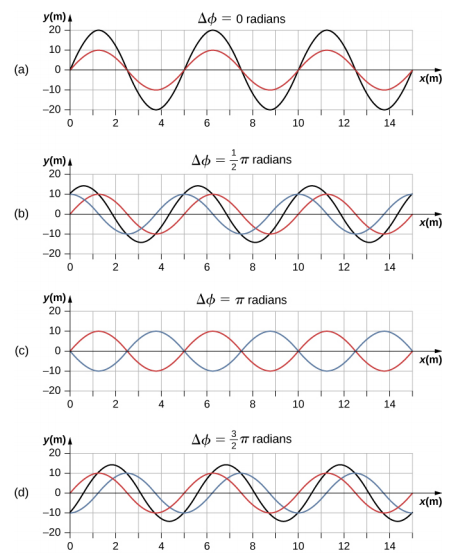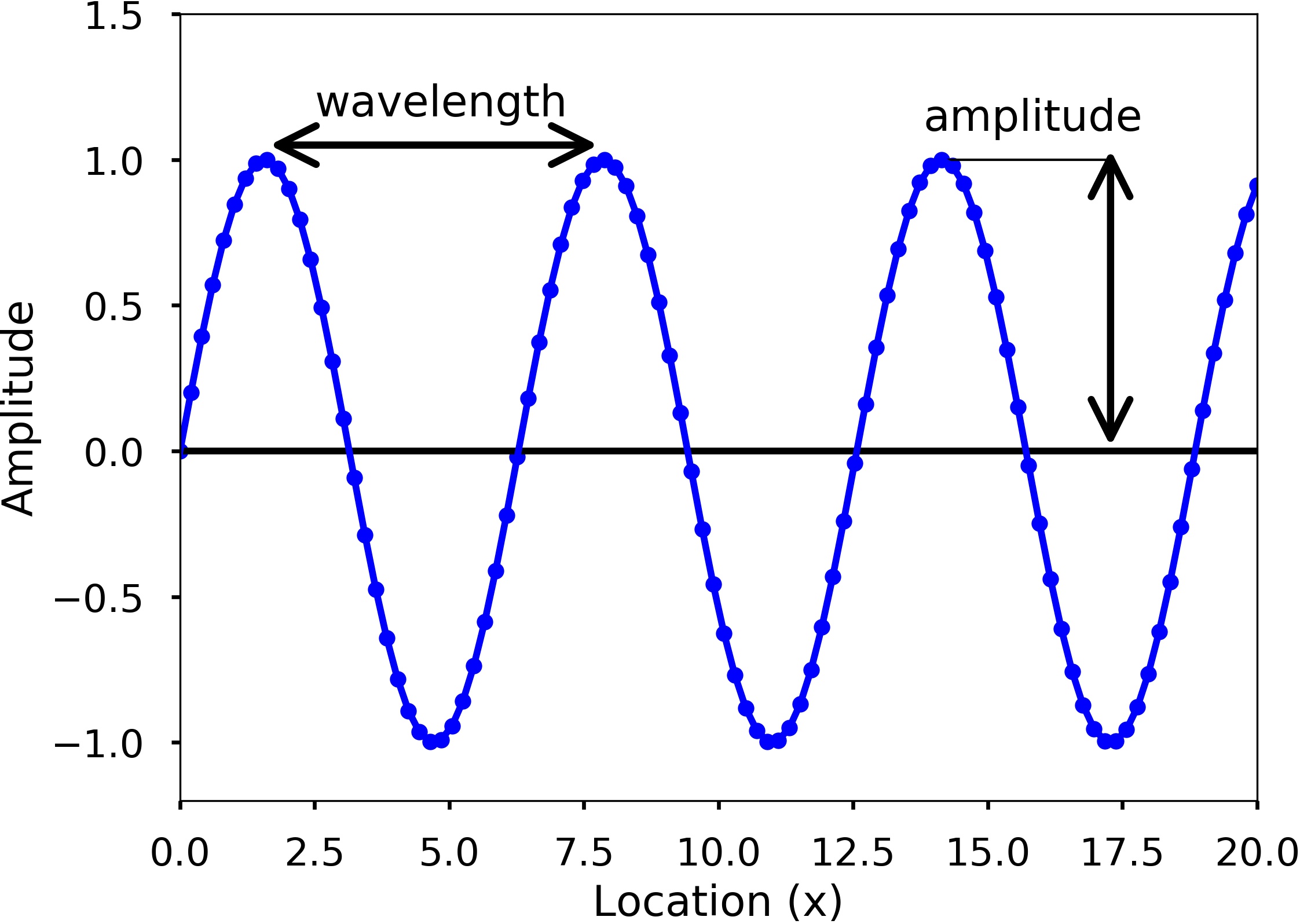How To Find The Amplitude Of A Resultant Wave
The amplitude of the resultant wave produced due to the interference of the two waves is. If two identical waves are traveling in the same direction with the same frequency wavelength and amplitude.

Wave Amplitude And Intensity A Level Physics Youtube
Then as the intensity is proportional to the amplitude squared the total intensity from.
How to find the amplitude of a resultant wave. A What is the amplitude of the resultant wave. The resultant amplitude when two waves of same frequency but with amplitudes a 1 and a 2 superimpose with a phase difference of 2 will be A a 1 2 a 2 2. The resultant wave has an amplitude of zero.
Expression for the amplitude of resultant wave. Find the resultant amplitude and the phase difference between the resultant wave and the first w. 2 A cos 2.
Let these waves differ in phase by . T0 we get A_ res cos0 A_1cos0 A_2cos0- phi implies A_ res A_1 A_2cosphi. What is the amplitude of resultant wave.
It is easier at first to assume that the amplitudes of the superposing waves are the same A. Examples are shown in parts b and d. Physics Assignment Help Amplitude of the resultant wave function Two travelling sinusoidal waves are described by the wave functions Y1 5500 sin400x - 1200t Y2 5500 sin400x - 1200t - 0250 where x Y1 and Y2 are in meters and t is in seconds.
If two identical waves are traveling in the same direction with the same frequency wavelength and amplitude. Now in this case weve only chosen to do this for points and because they should give us a very good idea of what the resultant wave is going to look like. But ideally wed do this for every point along the waves.
The resultant amplitude of the wave we get through the combination of the two interfering waves is equal to the addition of the displacements of those two waves at the same location as the. For example when looking at a sound wave the amplitude will measure the loudness of the sound. Consider two waves having the same frequency but different amplitudes A 1 and A 2.
BUT differ in phase the waves add together. Determine the amplitude of the resultant wave when two sinusoidal waves having the same frequency and traveling in the same direction are combined if their amplitudes are 30 cm and 40 cm and they differ in phase by 2 rad. Any other phase difference results in a wave with the same wave number and angular frequency as the two incident waves but with a phase shift of 2 2 and an amplitude equal to 2Acos2.
Yxt y_1xt y_2x t A_ rescoskx-omega t A_1coskx-omega t A_2coskx-omega t -phi textSetting x0. Find the amplitude of the resultant wave produced due to interference of two waves given as y 1 A 1 sin t y 2 A 2 sin t Advertisement Remove all ads. If playback doesnt begin shortly try restarting your device.
The amplitude is a measure of the strength or intensity of the wave. In light of this how do you find amplitude. You must first add the amplitudes and then square them to find the intensity.
Thus resultant amplitude R A 1 2 A 2 2 2 A 1 A 2 c o s R A 1 2 A 2 2 2 A 1 A 2 c o s 1 2. Given this information how can we find the amplitude of the resultant wave. So the resultant amplitude lies between the maximum resultant amplitude Amax and the minimum resultant amplitude Amin.
This plot shows two waves red and blue added together along with the resulting wave black. Amplitude is generally calculated by looking on a graph of a wave and measuring the height of the wave from the resting position. Videos you watch may be added to.
Please use the mathematical deterministic number in field to perform the calculation for example if you entered x greater than 1. Intensity of the resulting wave in interference The amplitude of the resulting wave interference is given by A A 1 2 A 2 2 2 A 1 A 2 c o s . How do you find the resultant of two waves.
At is the Amplitude of Resultant Reflected Waves k1 is the For Wave 1 k2 is the For Wave 2 A is the Amplitude Instructions to use calculator. What is resultant wave. When two linear waves in the same medium interfere the height of resulting wave is the sum of the heights of the individual waves taken point by point.
The displacement of each wave at x. BUT differ in phase the waves add together. Is there an error in this question or solution.
Resultant wave is A1 A2 2A. So the amplitude of the resultant wave is zero plus zero once again which is zero. When 0 crest to crest and trough to trough then cos 2 1.
Enter the scientific value in exponent format for example if you have value as 00000012 you can enter this as 12e-6. Given a problem of this nature this is what I would think of doing. And if we did wed see that this is what the resultant wave.
A sqrt A_122A_1A_2cosA_22. The resultant wave is the algebraic sum of the two individual waves. Amplitude of the wave y 1 and y 2 is A 1 and A 2 respectively.
When 0 crest to crest and trough to trough then cos 2 1. The amplitude of the resultant wave depends on the way two waves superimpose ie the phase angle .

The Resultant Amplitude Of Two Superposed Waves Video Lesson Transcript Study Com

Change The Wave Amplitude From A High Value To A Low Value In Terms Of Particle Motion How Would You Describe The Difference Between A High Amplitude Wave And A Low Amplitude

16 6 Interference Of Waves Physics Libretexts

Wavelength Frequency Amplitude And Phase Defining Waves Techplayon Frequencies Waves Magnetic Field

Wave Interference Venn Diagram Venn Diagram Diagram Waves

16 5 Interference Of Waves University Physics Volume 1

16 6 Interference Of Waves Physics Libretexts

The Resultant Amplitude When Two Waves Of Two Waves Of Same Frequency But With Youtube
Why Is The Amplitude Of A Stationary Wave The Same At All Points According This Physics Paper I M Doing Quora

16 5 Interference Of Waves University Physics Volume 1

Finding The Amplitude Waves Physics Youtube

Question Video Identifying The Resultant Of Two Interfering Waves Nagwa
Resultant Amplitude And Intensity Myrank

The Basics Of Waves Python Numerical Methods

Find The Resultant Amplitude And The Phase Difference Between The Resultant Wave And The First W Youtube

16 3 Mathematics Of Waves Physics Libretexts


Post a Comment for "How To Find The Amplitude Of A Resultant Wave"